The SandForce Roundup: Corsair, Kingston, Patriot, OCZ, OWC & MemoRight SSDs Compared
by Anand Lal Shimpi on August 11, 2011 12:01 AM ESTDiffering Firmwares
OCZ's exclusive on the SF-2281 has finally lifted and now we're beginning to see an influx of second generation SandForce drives from other vendors. Make no mistake, although these drives may look different, have creative new names and different PCBs - they should all perform the same if you know what you're comparing.
OCZ sells three lines of SF-2281 based drives: Vertex, Agility and Solid. The Vertex 3 uses synchronous NAND (read: faster), while the Agility 3 and Solid 3 use slower asynchronous NAND.
Other companies are following suit. Asynchronous NAND is more readily available and cheaper, so don't be surprised to find it on drives. So far everyone seems to be following OCZ's footsteps and creating separate lines for the synchronous vs. asynchronous stuff.
The table below should break it down for you:
| SandForce SF-2281 SSD Comparison | ||||||
| Product | NAND Type | Capacities Available | Latest FW Available | Price for 120GB Drive | ||
| Corsair Force GT | Sync IMFT | 60GB, 120GB, 240GB | Corsair v1.3 (SF v3.20?) | $248.49 | ||
| Kingston HyperX | Sync IMFT | 120GB, 240GB | SF v3.20 | $269.99 | ||
| MemoRight FTM Plus | Sync IMFT | 60GB, 120GB, 240GB, 480GB | MR v1.3.1 | N/A | ||
| OCZ Agility 3 | Async IMFT | 60GB, 120GB, 240GB | OCZ v2.11 (SF v3.20) |
$209.99 | ||
| OCZ Vertex 3 | Sync IMFT | 60GB, 120GB, 240GB, 480GB | OCZ v2.11 (SF v3.20) |
$254.99 | ||
| OCZ Vertex 3 MAX IOPS | Toggle | 120GB, 240GB | OCZ v2.11 (SF v3.20) |
$284.99 | ||
| OWC ME Pro 6G | Toggle | 120GB, 240GB, 480GB | SF v3.19 | $279.99 | ||
| OWC ME Pro 6G | Sync IMFT | 120GB, 240GB, 480GB | SF v3.19 | $279.99 | ||
| Patriot Pyro | Async IMFT | 60GB, 120GB, 240GB | SF v3.19 | $209.99 | ||
| Patriot Wildfire | Toggle | 120GB, 240GB, 480GB | SF v3.19 | $284.99 | ||
The four drives we're looking at today are a mixture of synchronous and asynchronous. The newly announced Patriot Pyro uses async NAND while everything else uses some form of synchronous Flash memory. OWC recently switched to using 32nm Toggle NAND in an effort to boost performance to OCZ MAX IOPS levels.
SandForce delivers firmware to all of its partners, however the schedules don't always match up. OCZ gets first dibs and renames its firmware to avoid direct comparisons to other drives. There are cases where OCZ may have some unique features in its firmwares but I don't believe that's the case with its latest revision.
Corsair and MemoRight do the same renaming, while the rest of the players stick to the default SandForce firmware version numbers. Everyone that shipped us drives seems to be sticking to either the latest firmware revision (3.20) or the one prior to it (3.19). Performance hasn't changed too much between all of these revisions, the majority of the modifications are there to squash this BSOD issue.
Corsair Force GT
The Force GT is Corsair's answer to OCZ's Vertex 3. The GT ships with a custom PCB design and is outfitted with IMFT (Micron branded) NAND running in synchronous mode. The 120GB sample we were sent for review has 16 NAND packages each with one 8GB MLC NAND die. Corsair just released its first firmware update for the Force GT, bringing it up to version 1.3 in Corsair-speak. Given the timing of the release, I'm going to assume this is Corsair's rebrand of the SandForce 3.20 firmware.
The Force GT is the cheapest 120GB SF-2281 based drive with synchronous NAND in the roundup. The drive comes with a 3 year warranty from Corsair.
Kingston HyperX
As Kingston's first SandForce SSD, the HyperX looks great. Although it doesn't really matter once you get it in the system, the HyperX enclosure has the most heft to it out of all of the SF-2281 drives we've reviewed. Part of the added weight comes from the two thermal pads that line the top and bottom of the case:
Kingston annoyingly uses 1.5mm hollow hex screws to keep the drive together, our biggest complaint from a physical standpoint. As a standalone drive the HyperX is our second most expensive here at $269.99 for 120GB.
The drive ships with a custom PCB and the latest SandForce firmware (3.20). Kingston sent along the upgrade kit which includes a 3.5" drive sled, USB enclosure, SATA cable and Kingston screwdriver:
MemoRight FTM Plus
We haven't had a MemoRight drive in for review since the early days of SSDs on AnandTech. The FTM Plus is a vanilla SF-2281 drive with SandForce's 3.19 firmware. The PCB design is custom although the NAND configuration is pretty standard. We got a 240GB drive in for review with 16 NAND devices and two 8GB 25nm IMFT die per chip.
OWC Mercury Extreme Pro 6G
The last time we reviewed OWC's Mercury Extreme Pro 6G we were a bit surprised by the presence of a rework on a shipping SSD. Since then a couple of things have changed. For starters, the rework is gone as you can see from the images above. While these drives use standard 25nm IMFT synchronous NAND, OWC has recently switched over to 32nm Toggle NAND - giving the Mercury Extreme Pro 6G the same performance as the MAX IOPS drives from OCZ or the Patriot Wildfire. We don't have the Toggle NAND drives in yet but I'd expect performance similar to the MAX IOPS for the updated drives. The branding and pricing haven't changed, just the performance.
The Mercury Extreme Pro 6G is offered with a 5 year warranty from OWC. It's also the most expensive SF-2281 based on IMFT NAND with a 120GB drive costing $279.99.
Patriot Pyro
While the Wildfire is Patriot's high-end SF-2281 offering, the Pyro is its more cost effective solution. The Pyro's savings come courtesy of its asynchronous NAND, putting it on par with an Agility 3. The Wildfire by comparison is akin to OCZ's MAX IOPS drives. Patriot uses the same PCB layout as OWC. The drive ships with firmware revision 3.19 and a 3-year warranty.
The Test
| CPU | Intel Core i7 2600K running at 3.4GHz (Turbo & EIST Disabled) - for AT SB 2011, AS SSD & ATTO |
| Motherboard: | Intel H67 Motherboard |
| Chipset: | Intel H67 |
| Chipset Drivers: | Intel 9.1.1.1015 + Intel RST 10.2 |
| Memory: | Corsair Vengeance DDR3-1333 2 x 2GB (7-7-7-20) |
| Video Card: | eVGA GeForce GTX 285 |
| Video Drivers: | NVIDIA ForceWare 190.38 64-bit |
| Desktop Resolution: | 1920 x 1200 |
| OS: | Windows 7 x64 |


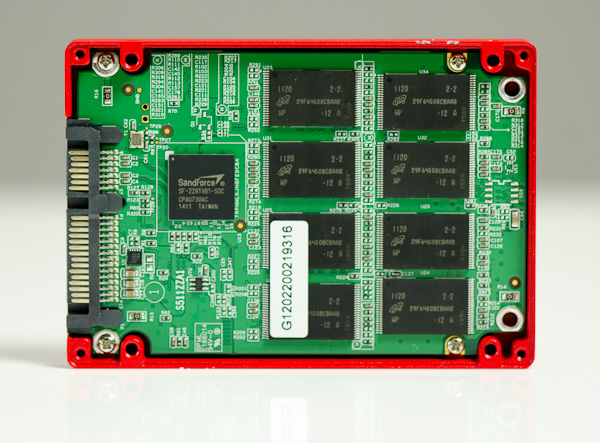



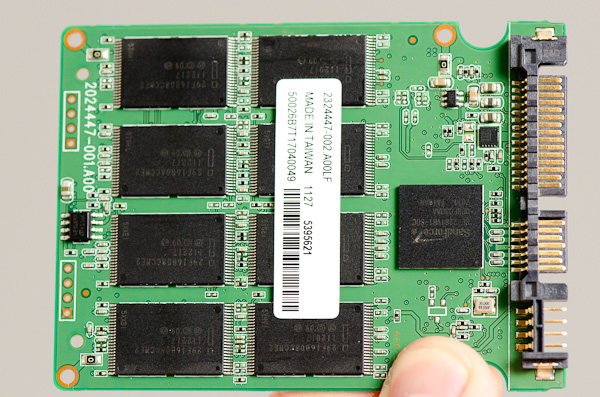
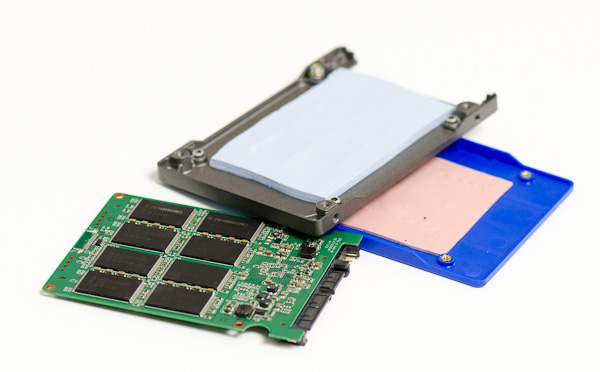
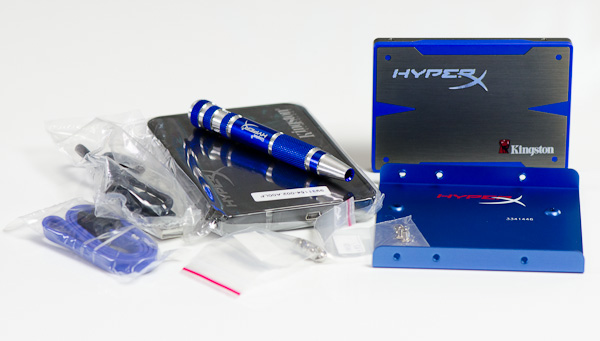






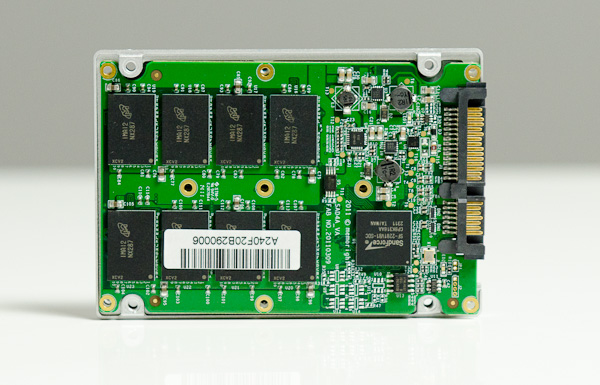




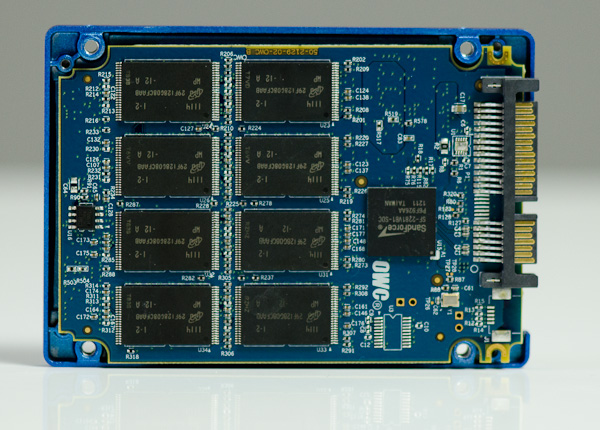
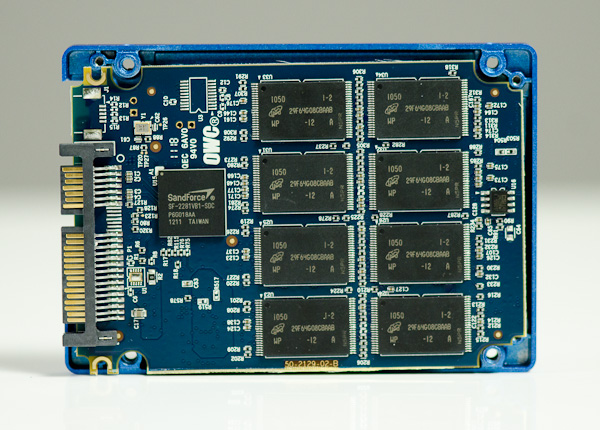


















90 Comments
View All Comments
secretanchitman - Thursday, August 11, 2011 - link
Thanks for the great review Anand! I'm rocking a Patriot Wildfire 240GB in my 2011 15" mbp (2.2ghz, 8GB, 6750m 1GB, 1680x1050 anti-glare) and it's been 100% perfect. I haven't seen any errors whatsoever in snow leopard, lion, and windows 7 via boot camp.These benchmarks are pretty consistent with what I see on my own drive, although the 240GB is a bit higher all around. :)
Movieman420 - Thursday, August 11, 2011 - link
Here is a good summary of the issue to date:From Ocz:
'...I think the ultimate fix will come with a FW coupled with Orom change and new RST/IME driver and possibly UEFI update for the motherboards, the issue needs to be nailed down, at this time its floating around with Orom changes etc and what ever SF do can be countered by what the Orom is doing...and yes SF are talking to Intel so i would hope between them they can get it worked out....
Full Post:
http://www.ocztechnologyforum.com/forum/showthread...
Nickel020 - Thursday, August 11, 2011 - link
Was gonna post this as well as the likely cause for the problems with the Asus board.Then again, if the Intel H67 is your testbed Anand, have you even updated the BIOS or are you staying with an older one for comparability? With an older BIOS it might have an older OROM as well and thus the issue could then not be solely caused by the OROM.
xijox - Thursday, August 11, 2011 - link
Thank you for another great write-up, Anand!I'm curious why you left the Corsair out of several of the benchmark results (4KB Random Read, 128KB Sequential Read and Write)?
beginner99 - Thursday, August 11, 2011 - link
maybe because it preformed worse than expected and the site got a little bribe from Corsair not to publish but instead put a nice commercial on the last page?philosofool - Thursday, August 11, 2011 - link
Don't be a jerk. If you're going to accuse someone of something like this, have some evidence.Anand Lal Shimpi - Thursday, August 11, 2011 - link
Or because I accidentally put the wrong graphs in the piece :) It has been fixed.Take care,
Anand
Beenthere - Thursday, August 11, 2011 - link
Sorry but the current SSDs are unreliable at this point in time and it's unscrupulous to continue selling these SSDs when a mfg. doesn't know the root cause, have a resolution for the operational/compatibility issues and can not tell consumers what systems can use these SSDs without issue.It's good to see Anandtech substantiate what I have been saying for some time. Now consumers need to stop purchasing these SSDs until they are properly revised so they function without issues for everyone.
gevorg - Thursday, August 11, 2011 - link
SSDs offer amazing performance, but too many of them are cursed with reliability problems. A is faster than B at price point C is not sufficient to make buying decisions with SSDs. When and how can benchmarks examine SSD quality issues?Axonn - Thursday, August 11, 2011 - link
Why is the Corsair Force 3 in only 1 of the benchmarks @ Random/sequential speed? And I can't see the Corsair GT anywhere on the first page?